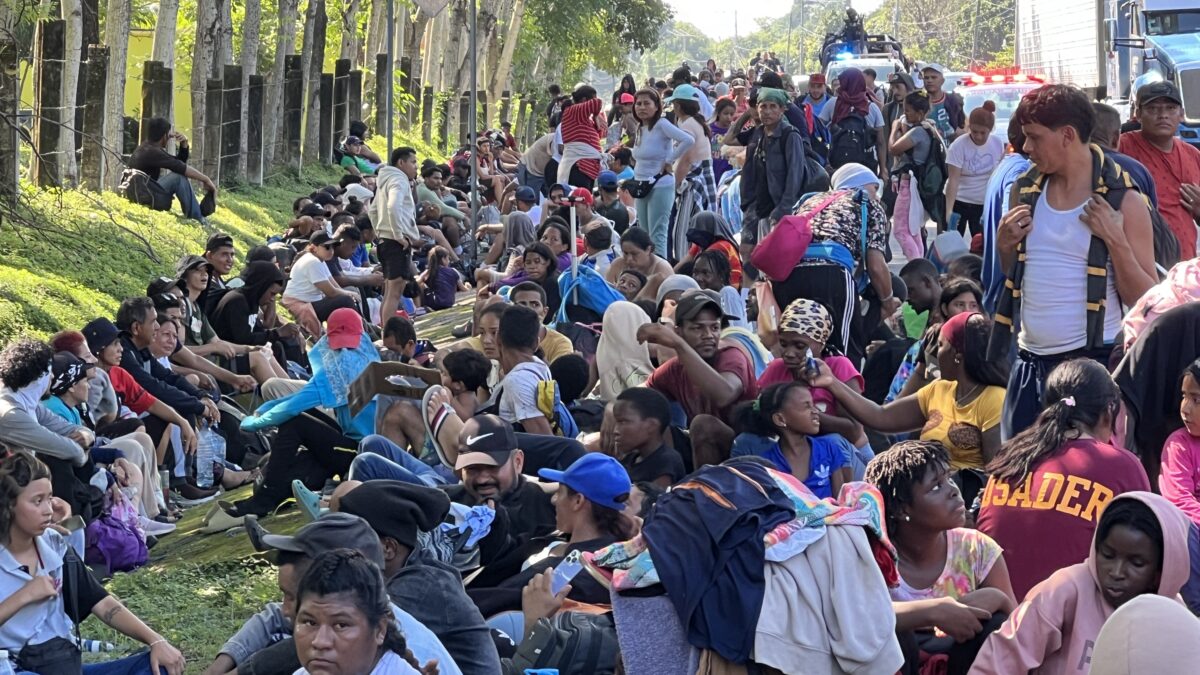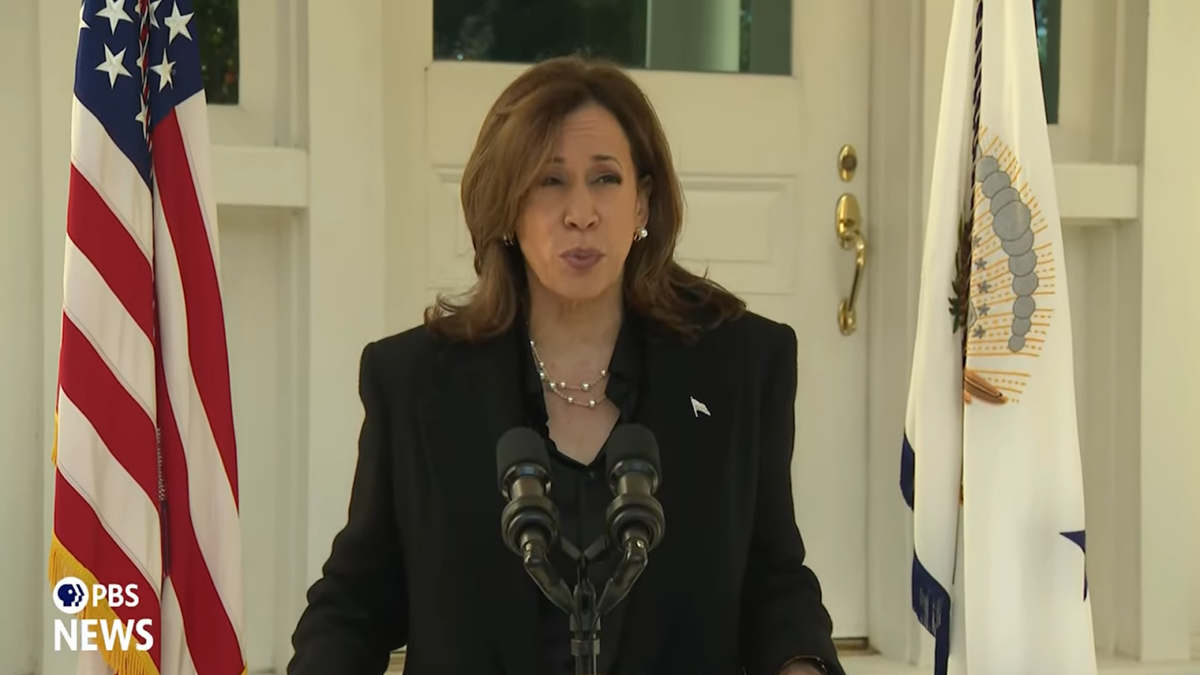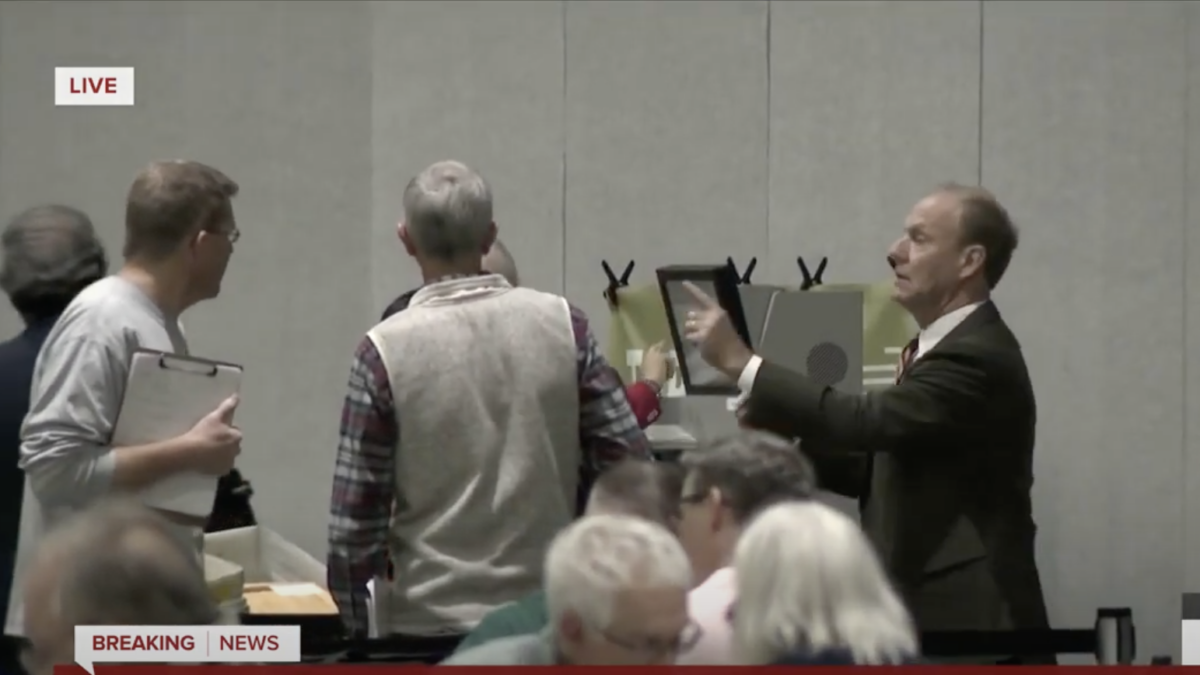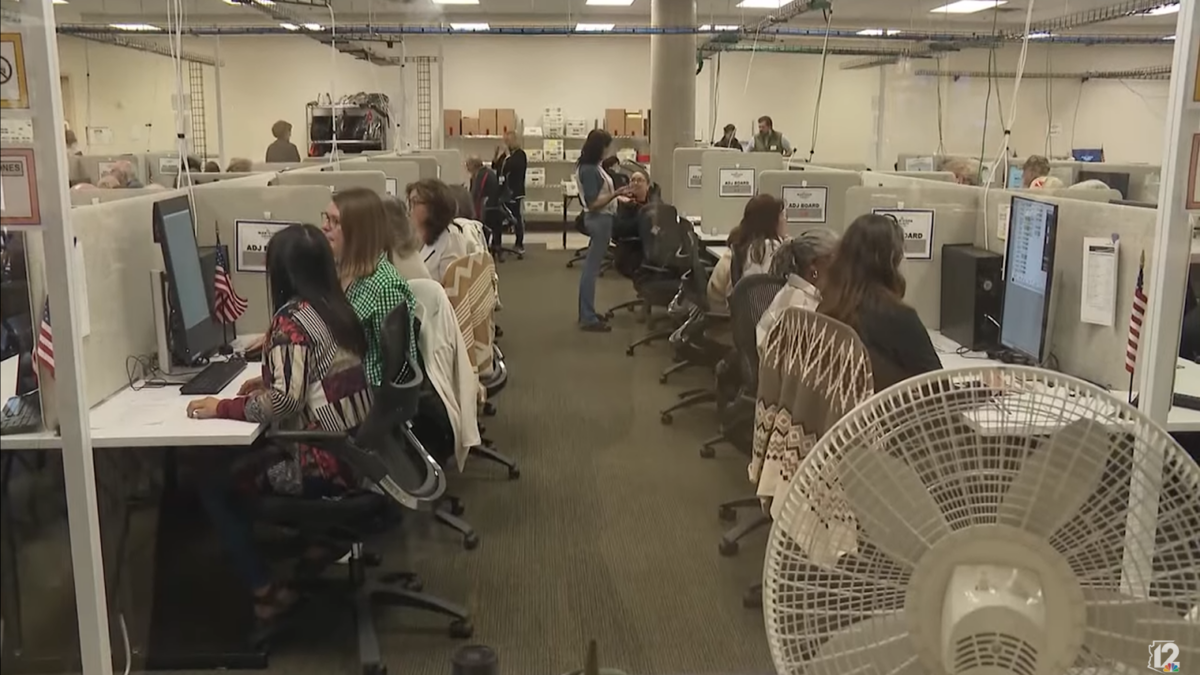
On the first day of the new year, Islamic terrorists claimed another 39 victims, including Americans, in an attack at a popular nightclub in Istanbul, Turkey. The Christmas truck attack in Berlin recalls the similar July attack in Nice, France. The suspect, Tunisian asylum seeker Anis Amri, was killed in a shootout with Italian police on December 23.
Amri had been denied asylum in Germany due to his terror risk, but was not deported because Tunisia would not accept him since he lacked a passport. Amri carried six different aliases from three nations and had been monitored by German authorities. He was not a “lone jihadist” but part of an ISIS cell, and traveled covertly, like some of the Paris killers, with the refugee flow from the Mediterranean.
On the same day as the Berlin attack, there was a knife attack at a Virginia Metro station by an African Muslim, Ali Ahmed Mohamound. A similar knife attack occurred in New York City the day before, with the suspect still at large.
All this followed on the heels of November’s Ohio State knife attack by Somali Muslim refugee Abdul Artan. These attacks typify the kinds recommended in ISIS literature, and ISIS claims credit for most of them. With Berlin, Brussels, Orlando, and so many other horrific attacks this year, San Bernardino and Paris almost seem like old news.
Although we view these events with horror and growing alarm, the outgoing Obama administration is literally importing terrorists through our nation’s refugee programs. Because private contractors are paid by the head to resettle refugees and other needy populations, the resettlement program has built-in incentives for uncontrolled growth. This harmonizes with the Left’s open borders agenda, which seeks to swell the rolls of new Democrat voters while weakening the influence of traditional (read conservative) America.
Big business shares this agenda in seeking cheap, subsidized labor. The resulting bipartisan alliance has long subsidized a resettlement industry that is expensive, secretive, duplicitous, and unconcerned about the Americans who pay for it with hard-earned tax dollars. The refugee resettlement program must be abolished in its current form before it puts us on the path toward today’s turbulent France and Germany.
The Real Risk of Increasing Terrorism
The most important risk the current refugee program creates is terrorism. Since 9/11 there have been 580 convictions for terrorism in the United States. At least 40 of these were refugees. Just this year, in addition to the knife attacks by Abdul Artan and Ali Mohamound, four other refugees have committed or attempted to commit acts of terrorism.
Since March 2014 there have been 111 ISIS-related arrests and 60 convictions. There have been nine indictments and six convictions of ISIS supporters in the metropolitan DC area alone. ISIS openly encourages “lone jihadi” attacks, and the State Department now admits ISIS is trying to penetrate the U.S. refugee flow. Some 250 U.S. Muslims from 19 states have either joined or attempted to join ISIS overseas. Many have since returned with little or no oversight.
Let’s be clear: these are not Mennonite terrorists. They are not Episcopalian suicide bombers. Virtually all 580 convictions since 9/11 were Muslim immigrants or American Muslim converts, and the Somali community consistently supplies such malefactors. Yet the Department of Homeland Security has provided tours of airport facilities to groups of Somalis, including explanations of airport inner workings, security protocols, and databases. DHS redacted some of this information as too sensitive to share with the public.
The Refugee Program Is Home to Major Fraud
Virginia knife attacker Ali Mohamound was carrying multiple identities when arrested. The Ohio State terrorist and his family lived in Pakistan for seven years before being resettled to the United States. Why were they not simply resettled in Pakistan? Afghani refugee Ahmad Rahami, the terrorist bomber of New York and New Jersey, originally entered the United States through the asylum program, but then traveled back to Afghanistan, where he apparently became radicalized. How can someone who is supposedly fleeing his home country for his life go back for a visit?
Virtually all U.S. Somalis originally arrived as refugees or asylum seekers or are their children. Many now take months-long trips back to Somalia, contradicting their purported reason for seeking asylum: fleeing Somalia for their lives. Minneapolis actually grants rent relief because Somalis complained about the cost of overdue rent upon their return. The home country visits so many “refugees” make undercut the program’s integrity.
The entire refugee resettlement program has systematic fraud, creating both national security risks and undue fiscal burdens. Refugee advocates claim the vetting process for Syrians is airtight, but U.S. security officials say exactly the opposite. An internal Immigrations, Customs, and Enforcement memo states, “[The] refugee program is particularly vulnerable to fraud due to loose evidentiary requirements where at times the testimony of an applicant alone is sufficient for approval.” The memo goes on to say that “the immigration system is a constant target for exploitation” by terrorists. An Immigration and Naturalization Services assistant commissioner said 95 percent of refugee and asylee applications are fraudulent.
The Obama administration has knowingly and routinely allowed illegal aliens falsely claiming asylum to remain in the United States. A September 2016 DHS Inspector General report found that 1,982 aliens from countries known for immigration fraud or terror-links who were scheduled for deportation were instead granted citizenship using false identities because fingerprint records were missing.
The United Nations selects almost all refugees, and the United States takes more refugees than all other resettlement nations combined. Yet many of the tens of thousands of unvettable Syrians who are accepted don’t meet the refugee definition.
Syrian Christians are facing genocide, and certainly do meet the definition, but represent less than 1 percent of those Syrians resettled so far. Syrian Muslims are more than 98 percent of the total. In the interest of diplomacy we are also resettling populations other countries refuse to take. Most recently, the Obama administration offered to accept 2,465 asylum seekers now being detained by Australia which that country refuses to accept because of their possible ties to terrorism. In response to congressional inquiries, the administration has declared information about this agreement classified.
Heavy Costs for Taxpayers Besides Terrorism Risks
Refugee resettlement is administered by three agencies: the U.S. Department of State’s Bureau of Population, Refugees and Migration (PRM), the Health and Human Services Office of Refugee Resettlement (ORR), and the Department of Homeland Security’s U.S. Citizenship and Immigration Service (USCIS). It has grown and metastasized over the years.

In fiscal year 2016, the program cost $2.4 billion, an increase of 205.4 percent since FY 2009. At the last minute Obama boosted ORR’s request to $3.9 billion for FY 2017 to handle the unprecedented flow of minors now being apprehended at the Southwest border. That’s 14,128 in the past two months alone and a 106 percent increase for the year.
Congress provided a pro-rata share of $500 million of this request in the short-term continuing resolution passed on December 9. It cannot be expended until the new Health and Human Services secretary has been installed. He can withhold some or all of those funds, if he chooses.

The table above shows the numbers resettled by category, a total of 195,231 individuals in FY 2015. This represents 20 percent of all immigrants allowed into the United States annually. The numbers will be significantly higher this year if nothing is done.
Since FY 2009, approximately 1 million migrants have arrived through these programs. Program costs average about $10,000 per head in the first year, and refugee welfare use is off the charts, even after five years (see table below). In fact, refugees resettled in the 1980s still receive welfare at rates well in excess of Americans and other immigrants.
The Center for Immigration Studies has estimated the annual cost of resettling Muslim refugees during the first five years at $12,874 per head. Muslim refugees use welfare at higher rates than average. I have estimated a somewhat lower average of $11,574 per head for the entire group. Cumulatively for the years 2009 through 2015, this cohort alone has cost U.S. taxpayers a staggering $48 billion. Since 1980, 3 million have been resettled.

Migrants Create a Heavy Toll on Communities
State and local costs are significant. When the Refugee Act was first passed, the federal government promised to cover 36 months of states’ share of food stamps, Medicaid, Refugee Cash Assistance (RCA), and Refugee Medical Assistance (RMA) for refugees—a huge subsidy. Today it covers no state costs. Refugees rely heavily on local assistance, and school budgets, costs for translation, and other services have exploded. Following is a sampling of problems in many U.S. communities:
- Amarillo, TX: 911 calls taken in 36 languages
- Amarillo, TX: English tutoring $1,300/student/month, while feds provide $100/student/year
- Buffalo, NY: 42 languages spoken in high school
- Lynn, MA: 49 languages spoken, some in unknown dialects
- Lynn, MA: 200 percent increase in vaccinations, straining public health budgets; foreign student K-12 admissions doubled
- Manchester, NH: 82 languages spoken in high school, among lowest school ratings in NH
- Minneapolis, MN: Somalis are a heavy ISIS recruitment target
- Minnesota: more than one-half of the Somali population is in poverty
- Rochester, NY: refugees and inner-city minorities clash
- Nationwide: 20 to 49 percent of refugees test positive for latent tuberculosis (TB)
- Nebraska: 82 percent of active TB cases are among foreign-born
Major Conflicts of Interest Among Refugee Resettlers
Nine private contractors, called “Voluntary Agencies” or VOLAGs, resettle refugees with the assistance of 320 “affiliates.” VOLAGs are supposed to consult communities before resettling refugees, but almost never do. They secretly resettle refugees and leave communities to deal with the resulting problems. They regularly withhold information from community leaders and concerned citizens and ignore local complaints.
Refugee resettlement has big effects for small communities throughout the United States, which is a major reason for growing resistance to the program. In one example, a federal agent contacted me in November to describe numerous problems in northern Michigan. He said citizens and public officials from Traverse City and elsewhere expressed concerns over the indiscriminate “dumping” of refugees and illegal aliens in small towns, including the Upper Peninsula, under cover of darkness, without any prior coordination with appropriate public officials (i.e. mayors, town councils, etc.).
Refugees are often employed in the resettlement industry, giving refugees a stake its growth. Many VOLAG leaders who receive federal resettlement grants are former directors of the agencies that administer those grants, and vice versa. Like a revolving door, they cycle in and out of government. For example, Bureau of Population, Refugees, and Migration Assistant Secretary Ann Richard is a former vice president for one of the nine VOLAGs. She helped found the International Crisis Group, a leftist organization funded by George Soros.
VOLAGs receive a total of about $1 billion per year from taxpayers and are paid by the head, receiving anywhere from $2,025 to more than $5,000 per refugee. The Government Accountability Office has noted that this creates a strong incentive for VOLAGs to constantly resettle more refugees, regardless of whether it is in the interest of the refugee or the target community.
David M. Robinson, who would later lead PRM, said of the refugee industry: “The solution its members offer to every refugee crisis is simplistic and the same: increase the number of admissions to the United States without regard to budgets or competing foreign policy considerations. On the other hand, it is politically well connected, includes major party donors at the local and national levels, and owns the moral high ground on an extremely emotional issue.”
VOLAGs have not faced any kind of meaningful oversight since the program was established in 1980. None have ever faced a public financial audit despite many calls to do so. The program is biased toward continual growth, and security concerns must be addressed.
Prioritizing Refugees Above American Citizens
The Refugee Act of 1980 dictates benefits that refugees must receive. They go to the front of the line for welfare and public housing, jumping ahead of all Americans, including veterans and the disabled. VOLAGs provide:
- Housing
- Essential furnishings
- Food, food allowance
- Seasonal clothing
- Pocket money
- Assistance in applying for public benefits, Social Security cards, language translation, employment services, non-employment services, Medicaid
- Assistance with health screenings and medical care
- Assistance with registering children in school
- Transportation to job interviews and job training
- Home visits
Additionally, ORR and other agencies provide numerous special grants available only to refugees. This is supposedly to enable refugees to rapidly become economically self-sufficient. However, ORR’s definition of “economic self-sufficiency” allows refugees to continue to receive every kind of welfare except cash assistance from food stamps or RCA. Refugees thus have a strong incentive to seek U.S. resettlement to obtain benefits.
Maine Gov. Paul LePage told me that elderly autistic residents of Portland, Maine are swelling the rolls of the homeless as their primary caretakers, usually their parents, die, or become unable to care for them, because public housing is taken by refugees.
What Americans and Our Leaders Should Do
The resettlement program is dangerous, expensive, and unfair to Americans. Its structure encourages endless growth, systemic corruption, cronyism, secrecy, and duplicity. The refugee program must be put on hold. Members of Congress have called for a moratorium, and such legislation is circulating. H.R. 3314, the Resettlement Accountability National Security Act, has 86 co-sponsors.
But legislation isn’t needed. On his first day in office, Trump can pause the entire program by simply resetting the annual refugee targets to whatever number has already been reached this fiscal year. The 1980 Refugee Act gives him authority to do this, and subsequent court decisions have declared Congress’s refugee resettlement oversight authority as advisory only.
Trump has stated his desire to halt resettlement from nations of terrorism concern. It would be wiser to pause the entire program.
It costs 12 times as much to resettle refugees as to assist them in place. Almost all refugeeswould prefer to return home than be resettled to a third country. President-Elect Trump’s idea to create “safe zones” in or near countries of conflict is a much more compassionate and cost-effective method of dealing with the refugee crisis. Trump’s State Department should encourage the Gulf States to participate in resettlement, since they currently offer little help.
The VOLAG system needs to be abolished. Asylum and other alternative forms of resettlement should operate case-by-case. Resettlement should be returned to the private act of charity it was before 1980. That structure would be naturally self-limiting, and those financing resettlement would have a much stronger incentive to see that their charitable dollars were not wasted on frauds or potential terrorists. Refugees should be required to become truly economically self-sufficient.
With such restrictions, other nations would have to confront and resolve conflicts they now offload onto America. The U.S. government role should be limited to security: helping create safe zones, identifying other countries that might help more, designating those populations suitable for resettlement, setting numerical limits, and vetting all refugees, asylum seekers, and others seeking U.S. entry. With new leadership, policies and management, Trump’s administration can reinvent the resettlement program to serve America’s interests again.









